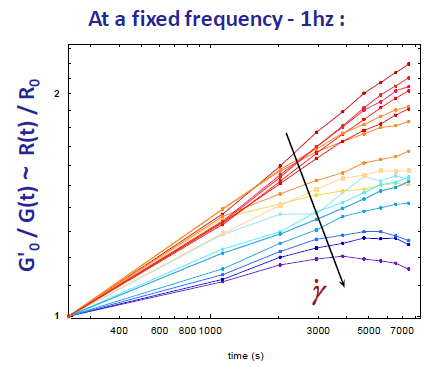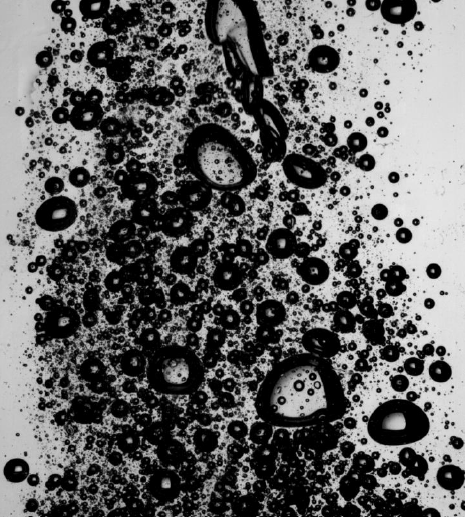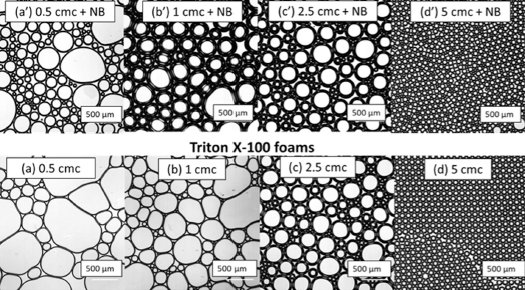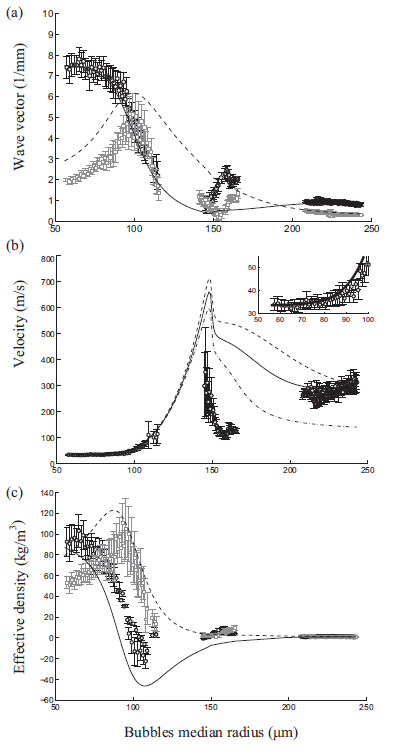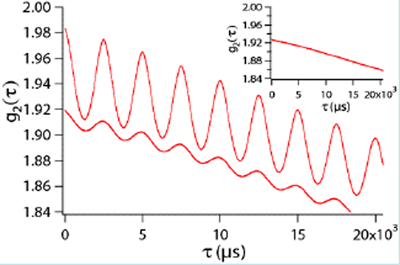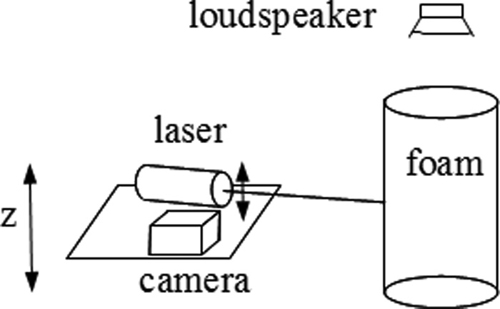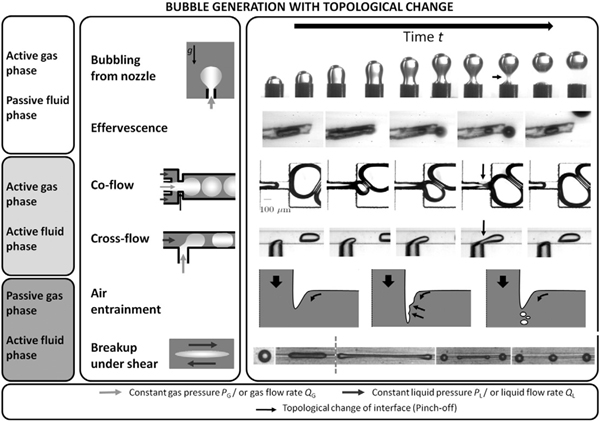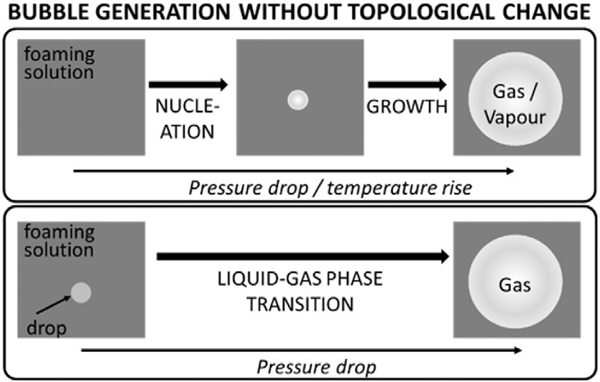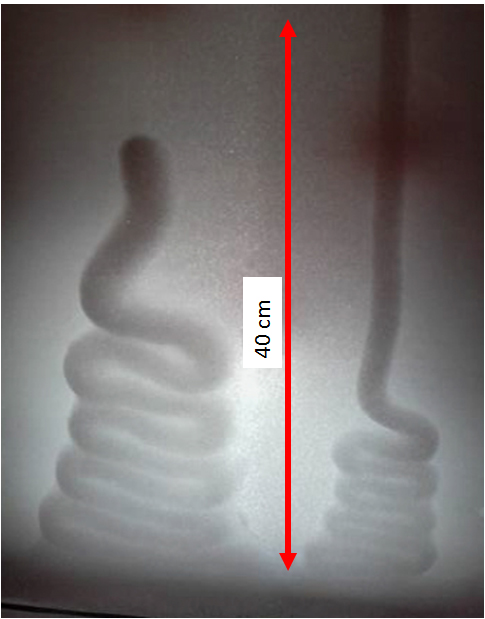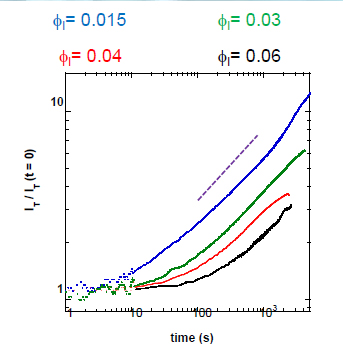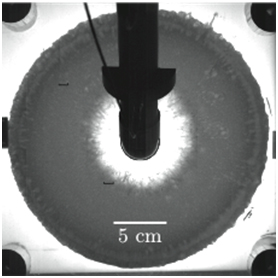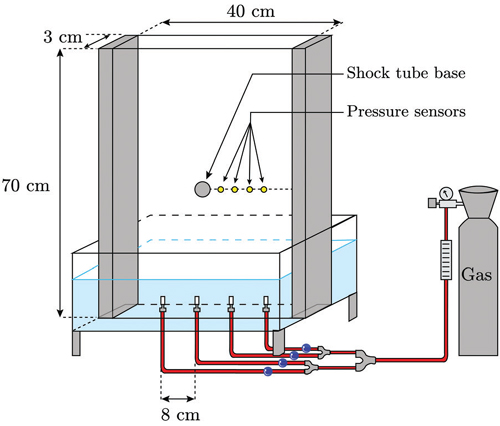context
Here, we use highly-controlled foams (in terms of bubble size and liquid fraction) and 'simple' chemical formulations ; then, the goal is to investigate advanced and complex physical properties of foams.
foam coarsening under steady shear
Here, we investigate if and how the continuous flow of a foam can impact its dynamics of coarsening. We introduce a new protocol where brief oscillatory measurements are inserted during a constant steady shear, allowing us to monitor the relative variation of the bubble size with time as a function of the applied shear rate. It turns out that the coarsening rate is strongly impacted by the applied shear: this rate is continuously reduced above a critical shear rate, which itself decreases with the bubble size. This coarsening-rate reduction is interpreted as the result of out-of-equilibrium and shear-dependent film thicknesses, being higher than at rest. The critical shear rate, above which films are dynamically sustained at higher thickness than at equilibrium, emerges from the competition between the rate of rearrangements and the time required to drain the thick film created during the rearrangement..
oil aeration and acoustics
With Valentin Leroy at MSC-Paris. Lubricating oils get aerated during their use, reducing their efficiency and stability. Deaerating agents are generally added to reduce aeration. Understanding the mechanisms by which these additives set the gas fraction in oil is crucial for the development of optimal formulation. Here we present experiments performed on a Flender test apparatus in which ultrasonic probes are incorporated. We present the technique and demonstrate that it provides the gas volume fraction but also information on the bubble size during the aeration process. Thanks to this measuring technique, new insights on the dynamics of both aeration and de-aeration are gained.
bulk nanobubbles and foams
With Daniele Vigolo (University of Birmingham). Here, we address if and how the addition of nanobubbles may change the interfacial and foaming properties of surfactant solutions. These measurements provide us with a comprehensive set of new results allowing us to draw a first multi-scale picture of how far nanobubbles could potentially act as foam boosters and stabilizers or be implemented in colloidal formulations.
foam acoustics - 1: ultrasound propagation
In collaboration with V. Leroy, F. Elias, C. Gay and C. Derec at MSC - Paris, W. Drenckhan (ICS-strasbourg) and J. Pierre (Institut D'alembert, Paris).
we have investigated the velocity and the adsorption of various ultrasonic signals propagating through controlled foams. Surprinsingly, all our results evidence the existence of a resonance effect.
here is a first paper : “Propagation of ultrasound in aqueous foams: bubble size dependence and resonance effects” I. BenSalem, R.M. Guillermic, C. Sample, V. Leroy, A. Saint-Jalmes, B. Dollet, Soft Matter, 2013, 9, 1194
And a second paper on these issues : "Sound propagation in liquid foams: Unraveling the balance between physical and chemical parameters" Juliette Pierre, Brice Giraudet, Patrick Chasle, Benjamin Dollet, and Arnaud Saint-Jalmes PHYSICAL REVIEW E 91, 042311 (2015)
We also recently published in Current Opinion in Colloids and Interface Science a review article : “the acoustics of liquid foams” by Florence Elias, Jerome Crassous, Caroline Derec, Benjamin Dollet, Wiebke Drenckhan, Cyprien Gay, Valentin Leroy, Camille Nous, Juliette Pierre and Arnaud Saint-Jalmes.
foam acoustics - 2: light scattering for monitoring sound propagation
In collaboration with Jerome Crassous and Benjamin Dollet at IPR
Foams have very unusual acoustic properties. The propagation of sound inside a foam remains poorly understood.
We first studied "dancing foams" : we measured the displacement induced by acoustic inside a foam, by using an optical technique (diffusing wave spectroscopy).
“Investigating acoustic-induced deformations in a foam using multiple light scattering” M. Erpelding, R.M. Guillermic, B. Dollet, A. Saint-Jalmes, J. Crassous Phys. Rev. E 82, (021409) (2010)
We also developped a new approach to monitor the features of an acoustic wave propagating into a foam.
"Synchronized Diffusive Wave Spectroscopy: Principle and Application to Sound Propagation in Aqueous Foams"
jerome Crassous,Patrick Chasle, Juliette Pierre, Arnaud Saint-Jalmes, and Benjamin Dollet, PHYSICAL REVIEW E, 93, 032611 (2016)
foaming
With Wiebke Drenckhan at ICS-Strasbourg, we wrote a detailled review entitled "the science of foaming", where we sort the different mechanisms leading to the generation of bubbles and foams.
aqueous foam coiling
Highly viscous fluids, like honey, make coils when falling on a solid board... elastic ropes also make coils... what about the coiling of a viscoelastic fluid? We investigate the coiling of aqueous foam column, and study how it depends on the foam intrinsic properties (liquid fraction, bubble size, chemical formulation) as well as on the foam column diameter and its falling height.
foam coarsening
In collaboration with François Graner (MSC - Paris) and Gilberto L. Thomas (Instituto di Fisica, UFRGS, Porto Alegre, Brasil).
The dynamics of foam coarsening depends on the bubble size, but also on the packing of these bubbles, thus on the foam liquid fraction. We report new experimental results on these issues thanks to: 1/ a home-made clinostat set-up, which rotates the foam samples to suppress drainage, 2/ a controlled foam production set-up, providing uniform foams at initial liquid fractions varied from 2.5% to 45%, and with a constant initial bubble radius of 50 microns, and 3/ optical measurements based both on multiple light scattering and microscopy to monitor the bubble size variation in time. These results can then be compared with simulations and shed light on the crossover between the two extreme regimes of coarsening (the "dry limit" for highly compressed bubbles vs the "wet limit" for separated bubbles).
Blast wave absorption in liquid foams
In collaboration with M. Monloubou, I. Cantat and B. Dollet at IPR.
blast wave absorption by liquid foams is especially efficient, and bubble size or liquid fraction optimization is an important challenge in this context.
Our first paper : "Influence of bubble size and thermal dissipation on compressive wave attenuation in liquid foams", EPL, 112 (2015) 34001.
And a second paper published in 'Soft Matter': "Blast wave attenuation in liquid foams: role of gas and evidence of an optimal bubble size", by M. Monloubou, M.A.Bruning, A. Saint-Jalmes, B. Dollet and and I. Cantat ; Soft Matter, 12, 8015--8024 (2016).
back to :
